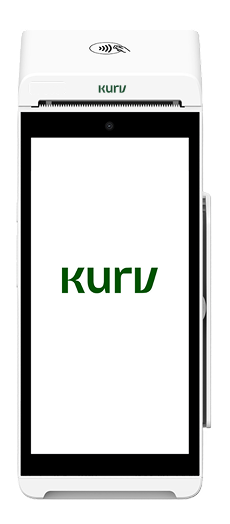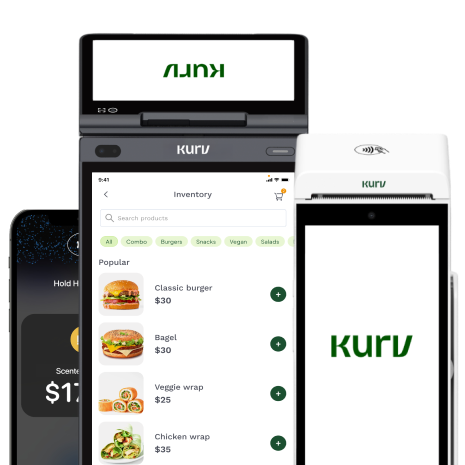What is ACH (Automated Clearing House Network)?
ACH payments account for more than $76 trillion in transactions [1] Nacha “ACH Network Moves 30 Billion Payments, $77 Trillion in 2022 Led by Growth in Same Day ACH and B2B“. Accessed September 4th, 2025. annually, making the ACH network one of the most utilized payment methods in the country.
However, as real-time payments become more prevalent within many businesses in both the U.S. and abroad, the ACH network faces potential challenges to its reputation as the leader of domestic bank-to-bank transfers. In other words, understanding an ACH payment and how it works is essential for companies seeking the best bank-to-bank transfer options.
Key Takeaways:
- An ACH payment is a secure, cost-effective electronic transfer between banks or financial institutions processed through the Automated Clearing House network.
- ACH payments involve an originator, a recipient, and a payment facilitator.
- ACH payments have two primary variations: ACH Credit and ACH Debit.
- While ACH payments have many benefits, using them for international transactions can get complicated.
So, what is an ACH payment? This guide explores ACH payments, how they work, their benefits, their disadvantages, and why they’re still relevant to modern businesses. Read ahead to learn more about bank-to-bank transfers and their impact on the contemporary payment landscape!
What is an ACH Payment?
An ACH payment is an electronic bank-to-bank transfer facilitated by the Automated Clearing House (ACH) network. Instead of using card networks to process transactions, ACH payments deposit money from one bank account to another using the ACH network.
The ACH Network is administered by the National Automated Clearing House Association (Nacha), an independent organization owned by some of the United States’ largest banks, credit unions, and payment processors. Established in the 1970s by the Federal Reserve System, it is a clearinghouse for various payments transferred between accounts.
Generally, using the ACH network is more affordable than using the major card brand networks. Traditional ACH payments take one to three days to process. However, in 2016, Nacha introduced Same-Day ACH [2] Nacha “Same Day ACH“. Accessed September 4th, 2025. , which deposits funds into recipient accounts multiple times daily, speeding up the process.
Although the ACH network offers slower processing times than other payment options, such as real-time payments, it remains a popular payment method in the United States. Between 2014 and 2023, the ACH network’s payment volume experienced a compound annual growth rate (CAGR) of 5.57% [3] Nacha “ACH Network Volume and Value Statistics”. Accessed September 4th, 2025. .
How Does ACH Work?
While businesses of all sizes rely on ACH payments for payroll, settling bills, and other functions, few understand how the system truly operates.
To process an ACH payment, the originator (the company or individual sending the money) contacts a payment facilitator who offers ACH payments. The originator provides the relevant bank details, the recipient bank details, and the total volume of money sent. The payment facilitator then batches the payment with ACH payments from other originators. Finally, these payments are submitted to the ACH network.
Next, the recipient’s bank receives payment instructions to debit the originator’s account and credit the receiver’s account. If this is a traditional ACH payment, processing will generally take one to three days. If this is a same-day ACH payment, it will be completed that day, provided it has been transferred before the last batch at 4:45 PM (ET). The ACH payment provider facilitates the transaction, ensuring successful payment.
You can contact your payment provider if you need help processing an ACH payment. Most providers have easy-to-use ACH interfaces, which can simplify money transfers made through the ACH network.
What are the ACH payment types?
There are two types of ACH payments: ACH credits and ACH debits. Both ACH credits and ACH debits offer efficiency, cost-effectiveness, and convenient advantages compared to traditional paper-based payment methods. They are widely used by businesses and financial institutions alike for various financial transactions, contributing to the seamless flow of funds in the banking system.
Let’s explore each payment type in more detail:
ACH Credit
An ACH credit occurs when the originator sets up the payment and requests that money be removed from their account and transferred to a recipient. As the originator credits the recipient’s account, it’s an “ACH credit.” For example, if a homeowner receives a water bill in the mail with an ACH payment option, they initiate an ACH Credit when they log into their bank account and set up a payment to settle the bill.
ACH Debit
An ACH debit occurs when money is withdrawn from the payment recipient’s account rather than sent from the payment originator’s account. For example, your water company automatically charges your bank account for your bill at a predetermined due date. This process is popular with utility companies, as bills may vary monthly.
Advantages of ACH Payments
There are numerous benefits to using ACH payments, both for consumers and businesses. Here are some ACH payment advantages:
Cost-effective
- ACH payments benefit from being one of the most affordable payment options available to businesses and individuals.
- However, while ACH payments are often cheaper than other methods (such as credit cards), the price you pay depends on the financial institution. Always compare ACH payment fees before selecting a provider.
Widely used
- The ACH network processes billions of payments every year. It’s currently the most popular business-to-business payment method, with 39% of US businesses using ACH credits. With more than 50 years of history, most businesses and financial institutions in North America are familiar with it.
- Likewise, it means many payment processors offer ACH payment services to businesses, making it simple to switch ACH payment providers without hiccups.
Secure
- ACH payments offer security benefits not found in many other bank-to-bank transfer platforms. Due to the stringent regulatory requirements and authentication processes, ACH payments are often considered more secure than international wire transfers.
- ACH transactions are subject to strict verification procedures, including authentication of sender and recipient identities.
- At the same time, international wire transfers may involve higher risks of fraud and unauthorized access due to varying regulatory standards and potential vulnerabilities in cross-border banking systems.
Easy to Scale
- The ACH system is easy to scale for businesses of any size. It can handle whether you need to make a single payment to a vendor or pay thousands of employees their salaries.
- Similarly, the ACH network is always suitable if you seek a payment system that can adapt as your business grows.
Same-day payments are now an option
- While traditional ACH payments take one to three days to process, a same-day ACH system now facilitates same-day bank transfers.
- With same-day ACH, payment batches are deposited multiple times throughout the day, ensuring your transfer arrives the same day it leaves your account if you submit it by 4:45 PM (ET).
Disadvantages of ACH Payments
Here are some of the potential downsides you may encounter with this payment option:
Slow Processing Times
- Traditional ACH payments usually take one to three days to process, making them unsuitable for businesses or individuals seeking instant payments. Not only is this inconvenient, but it can cause cash flow issues for business owners, freelancers, and other parties requiring timely payments.
- While same-day ACH has made it possible to send money faster, it’s still not in real-time. Same-day ACH submits multiple payments daily, with the last submission at 4:45 PM (ET). Anything submitted after this deadline will not reach the recipient’s account until the first payment submission the following day.
Limited overseas functionality
- The ACH system isn’t suitable for overseas payments. Its primary function involves transactions within the U.S.
- Businesses with overseas customers or employees must also use wire transfers to send or receive international payments.
A Quick Breakdown of ACH Fees
If you’re researching ACH payments, you’ve probably read a lot about their low cost. ACH payment providers usually charge a fixed fee or a percentage fee. If your business transfers large sums of money, a fixed fee is more affordable than a percentage fee; however, a percentage fee structure will likely be cheaper if your transfers are small.
The exact figures vary depending on the ACH provider you work with. Comparing processing rates is essential to get the best value from money transfers. Here’s what you can roughly expect to pay:
- Fees for flat-fee ACH providers: $0.20 to $1.50 per transaction
- Fees for percentage-based ACH providers: 0.5% to 1.5% per transaction
Although many credit card processors use a fee structure with a fixed and percentage-based charge, ACH pricing is much more affordable. However, you must also consider other fees when choosing an ACH provider:
- Account fees: Some ACH providers charge monthly fees for account servicing.
- Setup fee: ACH providers may charge businesses or individuals a one-time setup or origination fee.
- Batch fees: ACH providers may charge batch fees for businesses that transfer multiple payments simultaneously, such as payroll.
- ACH return fee: If an ACH payment is returned to the payment originator, ACH providers may charge a fee. Hence, it’s crucial to ensure a recipient’s bank details are correct before sending a payment.
ACH Payments: Key Takeaways
Recent developments in the payment landscape have challenged the ACH network’s position in the market. Real-time payments and Open Banking are making headlines for the advantages they offer to users. Still, the ACH network continues to benefit from year-over-year growth for many reasons: it’s low cost, convenient, secure, and widely used throughout the United States. As the ACH network now offers same-day payments, there’s no longer a need to wait one to three days to settle transactions.
To use the ACH network, your business must partner with a payment provider. Most providers can offer ACH payments using other payment methods, such as credit card processing, international money transfers, etc. Modern consumers expect businesses to offer their payment method of choice, so providing a broad range of options is critical. Contact Kurv today to learn about how ACH payments can benefit your business!
Frequently Asked Questions
How long does an ACH transfer take?
An ACH transfer usually takes one to three days, making it slower than other payment options. However, in 2016, Nacha introduced Same-Day ACH, which deposits funds into recipient accounts multiple times daily. Still, this process isn’t instant. The ACH network isn’t an ideal payment method if your business requires real-time payments.
How much does it cost overall to process ACH payments?
ACH transactions are usually more affordable than other payment types. The applicable fees depend on your ACH provider: some charge a fixed fee per transaction, while others charge a commission on the payment sum. Let’s explore the average costs for ACH payments:
Fees for flat-fee ACH providers: $0.20 to $1.50 per transaction
Fees for percentage-based ACH providers: 0.5% to 1.5% per transaction
What is an example of an ACH payment?
One example of an ACH payment is a direct deposit from a paycheck. Many businesses use the ACH network to pay their employees. The ACH network provides a safe, dependable method of paying an entire payroll on payday.
Can ACH payments be declined?
Yes, an ACH payment can be declined if the recipient’s details are incorrect or if the sender does not have sufficient funds to complete the transaction. Unfortunately, many banks charge fees for declined ACH payments. Make sure to double-check all details before submitting an ACH payment.
Who controls ACH payments?
Nacha controls the ACH payment network. As an independent operator, Nacha’s responsibility is to ensure the system operates according to its rules. It’s also responsible for other functions, such as ensuring that payment stakeholders use the ACH system in compliance with any new Federal legislation relating to the Automated Clearing House network.
What information is needed to receive and send an ACH payment?
The ACH network requires a few core details to complete a payment: the recipient’s and originator’s full names, as well as the ABA routing and account numbers for both parties. Only with these details can the payment be delivered to the correct account. Sometimes, a bank may also request the recipient’s personal or bank address before completing an ACH payment.




























